methanediimine
Modify Date: 2025-08-25 16:49:50

methanediimine structure
|
Common Name | methanediimine | ||
|---|---|---|---|---|
| CAS Number | 151-51-9 | Molecular Weight | 42.04000 | |
| Density | 1.02g/cm3 | Boiling Point | 154 °C | |
| Molecular Formula | CH2N2 | Melting Point | N/A | |
| MSDS | N/A | Flash Point | 46 °C | |
| Name | methanediimine |
|---|---|
| Synonym | More Synonyms |
| Density | 1.02g/cm3 |
|---|---|
| Boiling Point | 154 °C |
| Molecular Formula | CH2N2 |
| Molecular Weight | 42.04000 |
| Flash Point | 46 °C |
| Exact Mass | 42.02180 |
| PSA | 47.70000 |
| LogP | 0.51730 |
| Vapour Pressure | 14700mmHg at 25°C |
| Index of Refraction | n20/D 1.461 |
| InChIKey | VPKDCDLSJZCGKE-UHFFFAOYSA-N |
| SMILES | N=C=N |
|
Version 1.3
Regulation (EC) No 1907/2006 1 - Product and Company Information Product NamePOLYCARBODIIMIDE, 50 WT. % SOLUTION IN PROPYLENE GLYCOL METHYL ETHER ACETATE 2 - Hazards Identification SPECIAL INDICATION OF HAZARDS TO HUMANS AND THE ENVIRONMENT May impair fertility. Flammable. Harmful by inhalation, in contact with skin and if swallowed. Irritating to eyes, respiratory system and skin. 3 - Composition/Information on Ingredients Product NameCAS #EC noAnnex I Index Number POLYCARBODIIMIDE, 50 WT. %NoneNoneNone SOLUTION INPROPYLENE GLYCOL METHYL ETHER ACETATE FormulaCH2N2 4 - First Aid Measures AFTER INHALATION If inhaled, remove to fresh air. If not breathing give artificial respiration. If breathing is difficult, give oxygen. AFTER INGESTION If swallowed, wash out mouth with water provided person is conscious. Call a physician immediately. 5 - Fire Fighting Measures EXTINGUISHING MEDIA Suitable: For small (incipient) fires, use media such as "alcohol" foam, dry chemical, or carbon dioxide. For large fires, apply water from as far as possible. Use very large quantities (flooding) of water applied as a mist or spray; solid streams of water may be ineffective. Cool all affected ALDRICHwww.molbase.com containers with flooding quantities of water. SPECIAL RISKS Specific Hazard(s): Combustible liquid. Emits toxic fumes under fire conditions. SPECIAL PROTECTIVE EQUIPMENT FOR FIREFIGHTERS Wear self-contained breathing apparatus and protective clothing to prevent contact with skin and eyes. 6 - Accidental Release Measures PROCEDURE(S) OF PERSONAL PRECAUTION(S) Wear respirator, chemical safety goggles, rubber boots, and heavy rubber gloves. METHODS FOR CLEANING UP Absorb on sand or vermiculite and place in closed containers for disposal. Ventilate area and wash spill site after material pickup is complete. 7 - Handling and Storage HANDLING Directions for Safe Handling: Do not breathe vapor. Avoid contact with eyes, skin, and clothing. Avoid prolonged or repeated exposure. STORAGE Conditions of Storage: Keep tightly closed. Keep away from heat and open flame. Store in a cool dry place. 8 - Exposure Controls / Personal Protection ENGINEERING CONTROLS Mechanical exhaust required. Safety shower and eye bath. GENERAL HYGIENE MEASURES Wash contaminated clothing before reuse. Wash thoroughly after handling. PERSONAL PROTECTIVE EQUIPMENT Special Protective Measures: Wear appropriate government approved respirator, chemical-resistant gloves, safety goggles, other protective clothing. 9 - Physical and Chemical Properties pH N/A BP/BP Range154,000 °C MP/MP RangeN/A Flash Point46,000 °CMethod: closed cup FlammabilityN/A Autoignition TempN/A Oxidizing Properties N/A Explosive Properties N/A Explosion LimitsN/A Vapor PressureN/A SG/Density1,0300 g/cm3 Partition Coefficient N/A ALDRICHwww.molbase.com ViscosityN/A Vapor DensityN/A Saturated Vapor Conc. N/A Evaporation RateN/A Bulk DensityN/A Decomposition Temp.N/A Solvent ContentN/A Water ContentN/A Surface TensionN/A ConductivityN/A Miscellaneous DataN/A SolubilityN/A 10 - Stability and Reactivity STABILITY Stable: Stable. Conditions of Instability: Moisture. Conditions to Avoid: Moisture. Materials to Avoid: Strong acids. HAZARDOUS DECOMPOSITION PRODUCTS Hazardous Decomposition Products: Carbon monoxide, Carbon dioxide, Nitrogen oxides. HAZARDOUS POLYMERIZATION Hazardous Polymerization: Will not occur 11 - Toxicological Information SENSITIZATION Sensitization: Prolonged or repeated exposure may cause allergic reactions in certain sensitive individuals. SIGNS AND SYMPTOMS OF EXPOSURE Exposure can cause: Narcotic effect. Lung irritation, chest pain, and edema which may be fatal. CNS depression. Dermatitis. Gastrointestinal disturbances. Contact with eyes may cause blindness. To the best of our knowledge, the chemical, physical, and toxicological properties have not been thoroughly investigated. ROUTE OF EXPOSURE Skin Contact: Causes skin irritation. Skin Absorption: May be harmful if absorbed through the skin. Eye Contact: Causes eye irritation. Can cause blindness. Warning: exposure to vapor may cause eye injury, the onset of which may be delayed for several hours. Avoid all exposure to eyes. Inhalation: May be harmful if inhaled. Material is irritating to mucous membranes and upper respiratory tract. Ingestion: May be harmful if swallowed. TARGET ORGAN INFORMATION Nerves. Liver. Kidneys. CHRONIC EXPOSURE - REPRODUCTIVE HAZARD Result: Overexposure may cause reproductive disorder(s) based on tests with laboratory animals. ALDRICHwww.molbase.com 12 - Ecological Information No data available. 13 - Disposal Considerations SUBSTANCE DISPOSAL This combustible material may be burned in a chemical incinerator equipped with an afterburner and scrubber. Observe all federal, state, and local environmental regulations. 14 - Transport Information RID/ADR UN#: 1993 Class: 3 PG: III Proper Shipping Name: Flammable liquid, n.o.s. IMDG UN#: 1993 Class: 3 PG: III Proper Shipping Name: Flammable liquid, n.o.s. Marine Pollutant: No Severe Marine Pollutant: No Technical Name: Required IATA UN#: 1993 Class: 3 PG: III Proper Shipping Name: Flammable liquid, n.o.s. Inhalation Packing Group I: No Technical Name: Required 15 - Regulatory Information CLASSIFICATION AND LABELING ACCORDING TO EU DIRECTIVES INDICATION OF DANGER: T Toxic. R-PHRASES: 60-10-20/21/22-36/37/38 May impair fertility. Flammable. Harmful by inhalation, in contact with skin and if swallowed. Irritating to eyes, respiratory system and skin. S-PHRASES: 53-16-26-36/37/39-45 Avoid exposure - obtain special instructions before use. Keep away from sources of ignition - no smoking. In case of contact with eyes, rinse immediately with plenty of water and seek medical advice. Wear suitable protective clothing, gloves, and eye/face protection. In case of accident or if you feel unwell, seek medical advice immediately (show the label where possible). Caution: Substance not yet fully tested (EU). 16 - Other Information WARRANTY The above information is believed to be correct but does not purport to be all inclusive and shall be used only as a guide. The ALDRICHwww.molbase.com information in this document is based on the present state of our knowledge and is applicable to the product with regard to appropriate safety precautions. It does not represent any guarantee of the properties of the product. Inc., shall not be held liable for any damage resulting from handling or from contact with the above product. See reverse side of invoice or packing slip for additional terms and conditions of sale. Copyright 2010 Co. License granted to make unlimitedpaper copies for internal use only. DISCLAIMER For R&D use only. Not for drug, household or other uses. ALDRICHwww.molbase.com SECTION 16 - ADDITIONAL INFORMATION N/A |
| Hazard Codes | T: Toxic; |
|---|---|
| Risk Phrases | 60-10-20/21/22-36/37/38 |
| Safety Phrases | 53-16-26-36/37/39-45 |
| RIDADR | UN 1993 3/PG 3 |
| HS Code | 3824909990 |
| Precursor 8 | |
|---|---|
| DownStream 4 | |
| HS Code | 2925290090 |
|---|---|
| Summary | 2925290090 other imines and their derivatives; salts thereof。Supervision conditions:None。VAT:17.0%。Tax rebate rate:9.0%。MFN tariff:6.5%。General tariff:30.0% |
| Methanediylidenediamine |
| Stabilisator 9000 |
| polycarbodiimide |
| Methanediimine (9CI) |
| Polycarbodiimid |
| carbodiimid |
| MFCD00284329 |
| carbodiimide |
| carbodiimine |
| Polycarbodiimide solution |
 CAS#:77287-34-4
CAS#:77287-34-4 CAS#:420-04-2
CAS#:420-04-2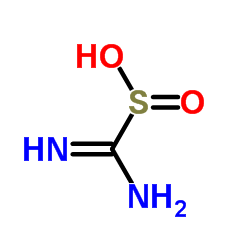 CAS#:1758-73-2
CAS#:1758-73-2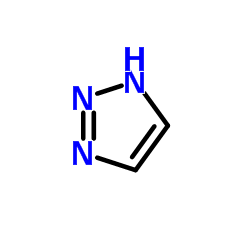 CAS#:288-36-8
CAS#:288-36-8 CAS#:288-94-8
CAS#:288-94-8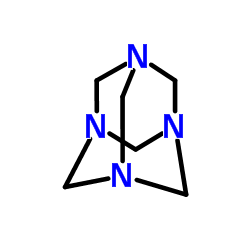 CAS#:100-97-0
CAS#:100-97-0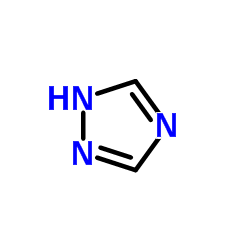 CAS#:288-88-0
CAS#:288-88-0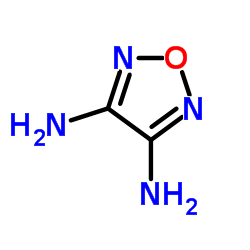 CAS#:17220-38-1
CAS#:17220-38-1 CAS#:1000-70-0
CAS#:1000-70-0 CAS#:3080-42-0
CAS#:3080-42-0 CAS#:113-00-8
CAS#:113-00-8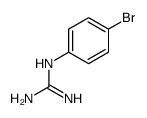 CAS#:67453-81-0
CAS#:67453-81-0